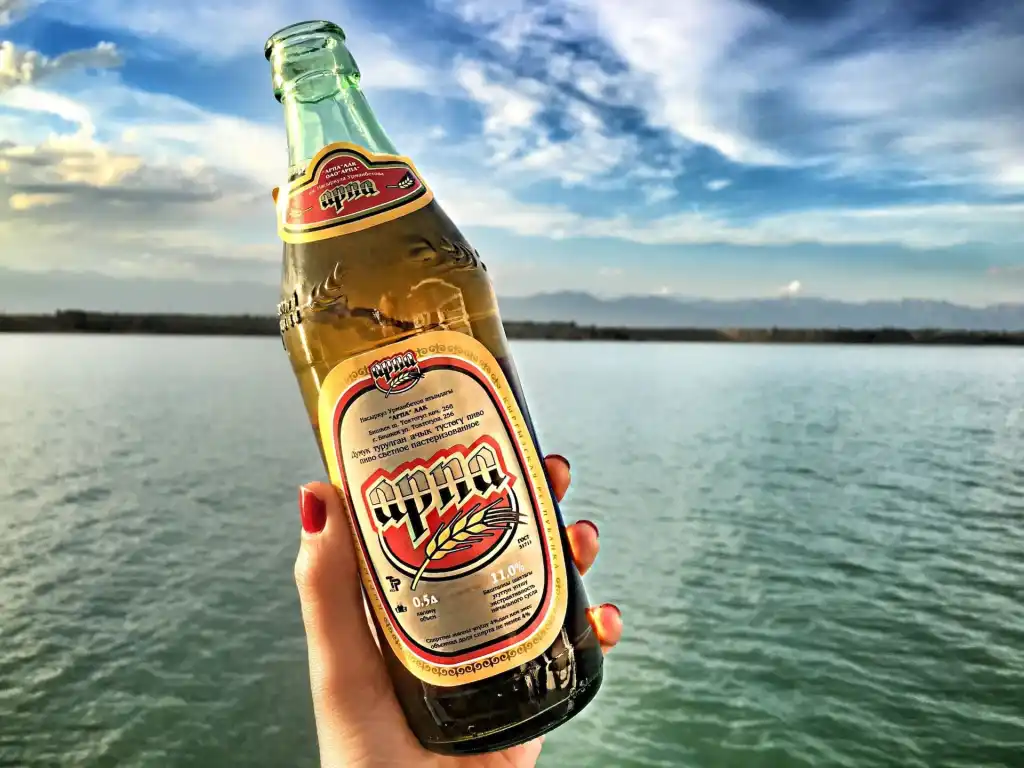It’s big, it’s warm, it’s salty – and it’s by far one of Kyrgyzstan’s top tourist attractions. Talking about none other than Issyk Kul which literally translates as “warm/hot lake” in Kyrgyz because it never freezes even though it’s 1,609 meters above sea level and surrounded by the towering Tian Shan mountains where it can snow even in June.
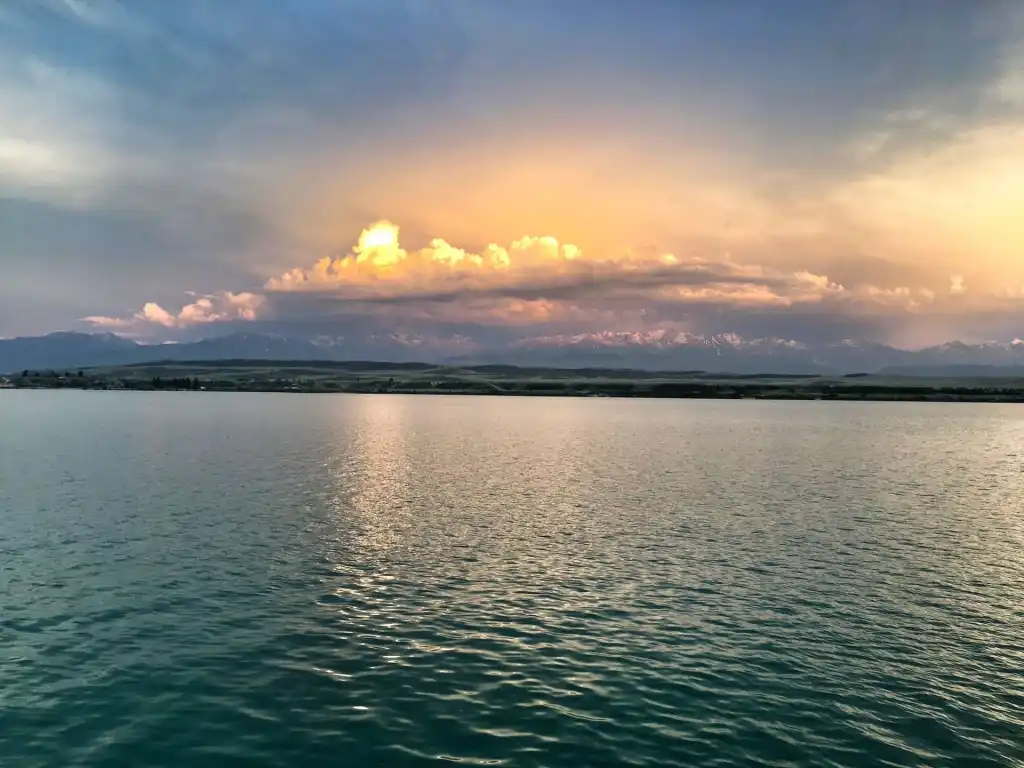
Not your average lake, Issyk Kul which is found in the eastern part of Kyrgyzstan comes with plenty of impressive titles such as “the second largest alpine lake in the world” behind Lake Titicaca, “the second saltiest lake in the world” behind the Caspian Sea, and “the seventh deepest lake in the world” behind six other lakes you can Google. Also described as the “Pearl of Kyrgyzstan”, Issyk Kul’s crowded north shore around Cholpon Ata has been popular for years amongst regional tourists, but as of late it is its south shore which has been receiving the most international attention due to its unspoiled shoreline and a couple of successful tourism development projects.
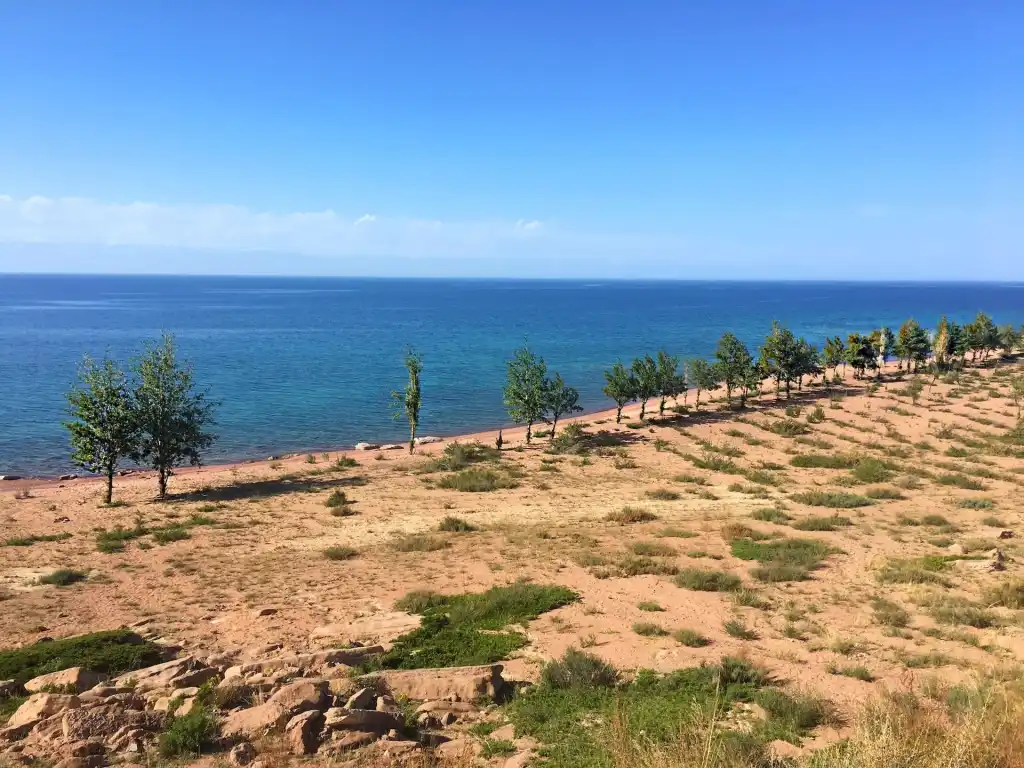
Karakol, the capital of the Issyk Kul region about 400 km from Bishkek, is the best spot to base yourself when exploring the area and though the town is nothing to write home about, it is the unique vibe of the place and the experiences to be had in vicinity that will blow your mind. At least they all blew mine and here are some of the highlights from the five days and four nights I spent there.
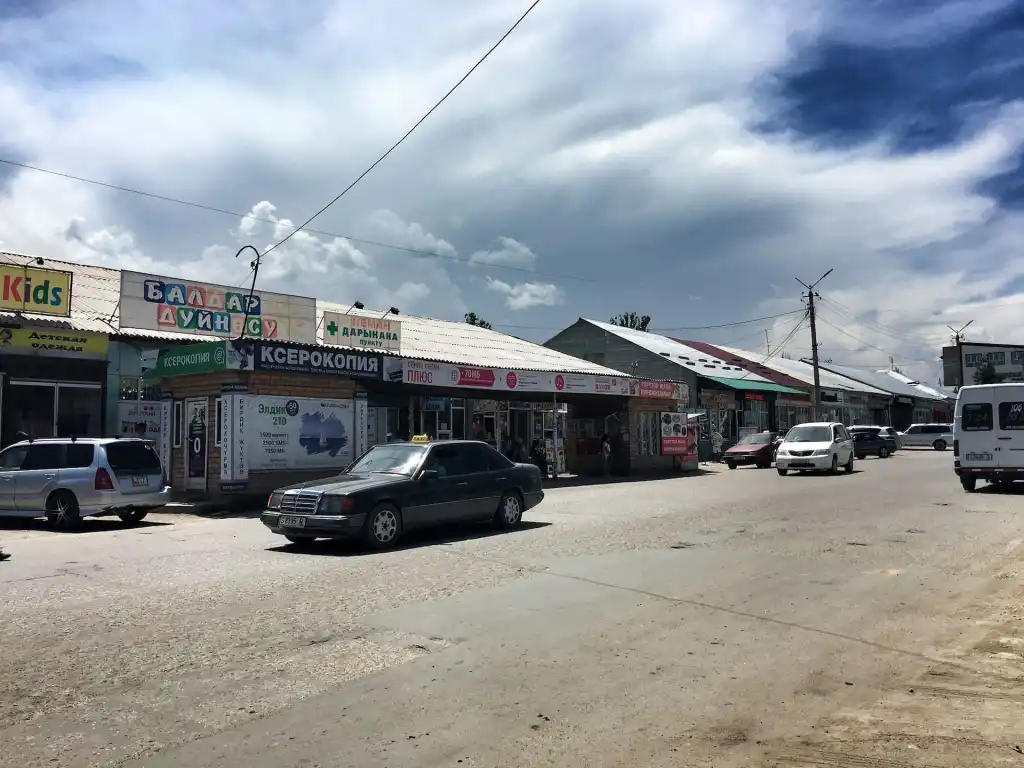
Nightlife and café culture in Karakol
Starting in order of importance, I just have to throw it out there that unless I can find a decent bar in your town and a nice cafe, odds are I probably won’t be keen on staying too long. I like the nightlife and I like to boogie – if only for one night – and glory be that during the time spent in Karakol I got in two pretty solid party sessions.
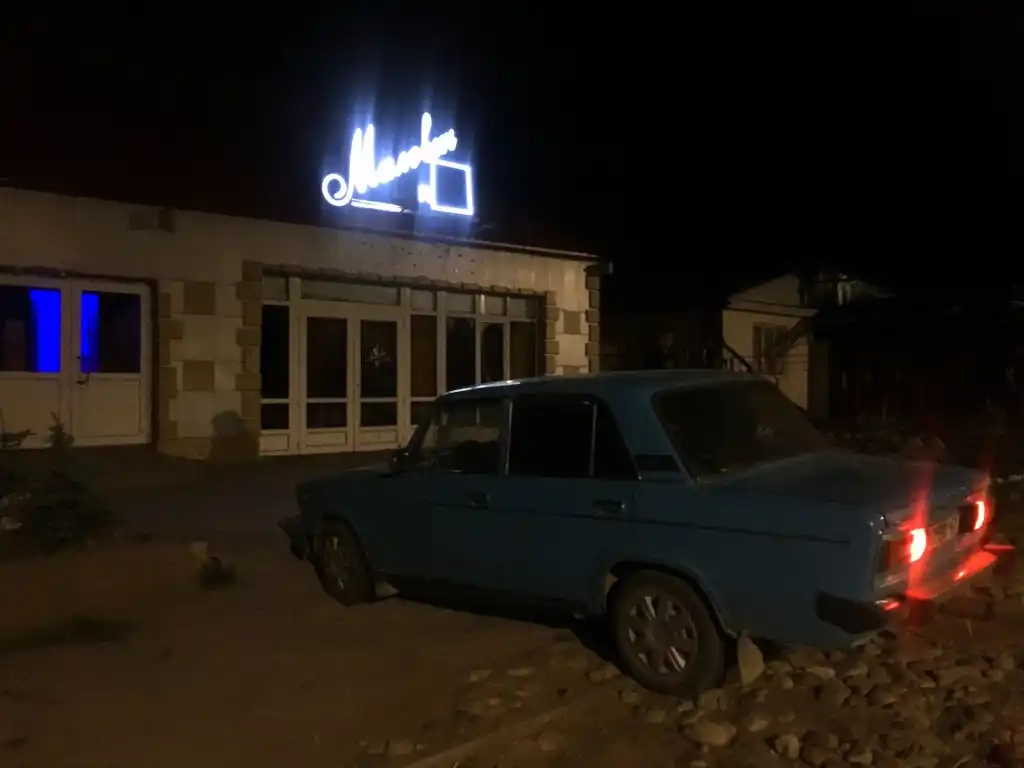
First off was that infamous karaoke night at Malevich with my girl Ashlyn which started with a bottle of vodka and concluded with a nine minute “live” Instagram broadcast of Madonna and Roxette which I felt compelled to transmit to the world. Sorry about that. You know you’ve probably caused a scene when you go back the next night to pick up the jacket you left behind and they block the entrance to the karaoke room the moment they see your face.
The second night was a little less wild on our end, but still pretty bonkers to experience in the deep east of Kyrgyzstan. We were taken to some obscure club on the edge of town – also known as Karkyra – by Kudrat, my homie/driver, where people were seriously getting LOOSE. I didn’t think dance parties like that existed in Karakol but so thankful we sniffed this one out and now I have living proof that nightlife does exist in that city in case anyone tries to argue otherwise.
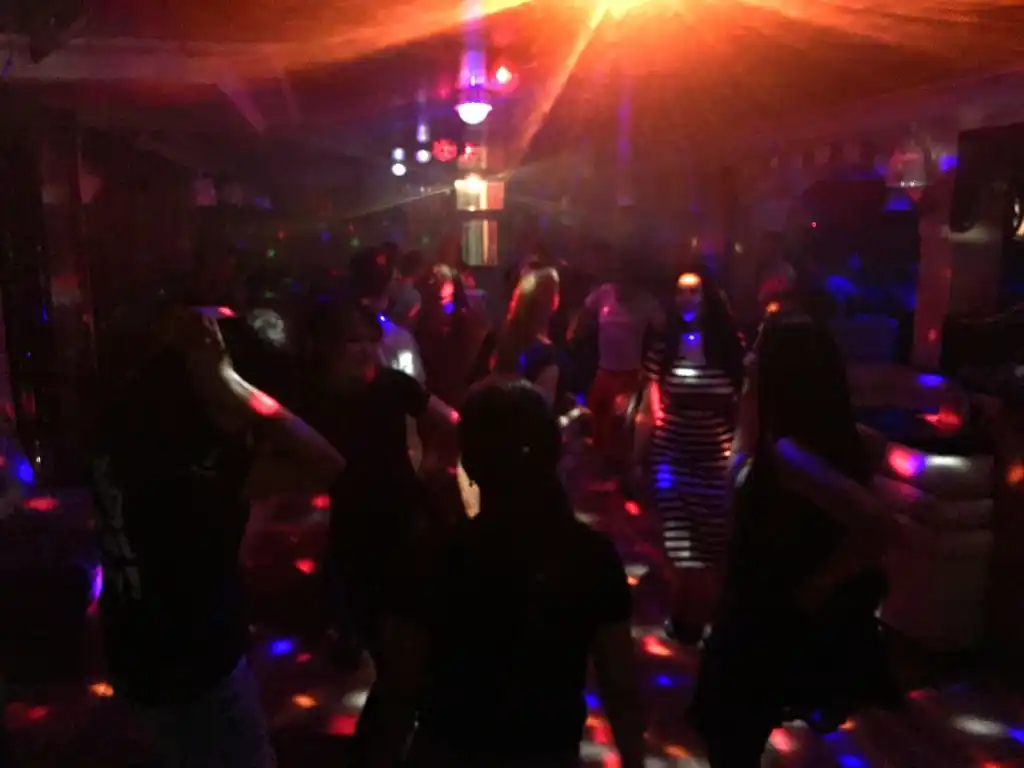
As for cafés, there were two that I really loved and could have spent much more time hanging around if my schedule wasn’t so busy. Fat Cat is the most popular and most written about – for good reason. The owner Jamila is amazing and there you can find handicrafts made by locals with 100% of those profits going back to them
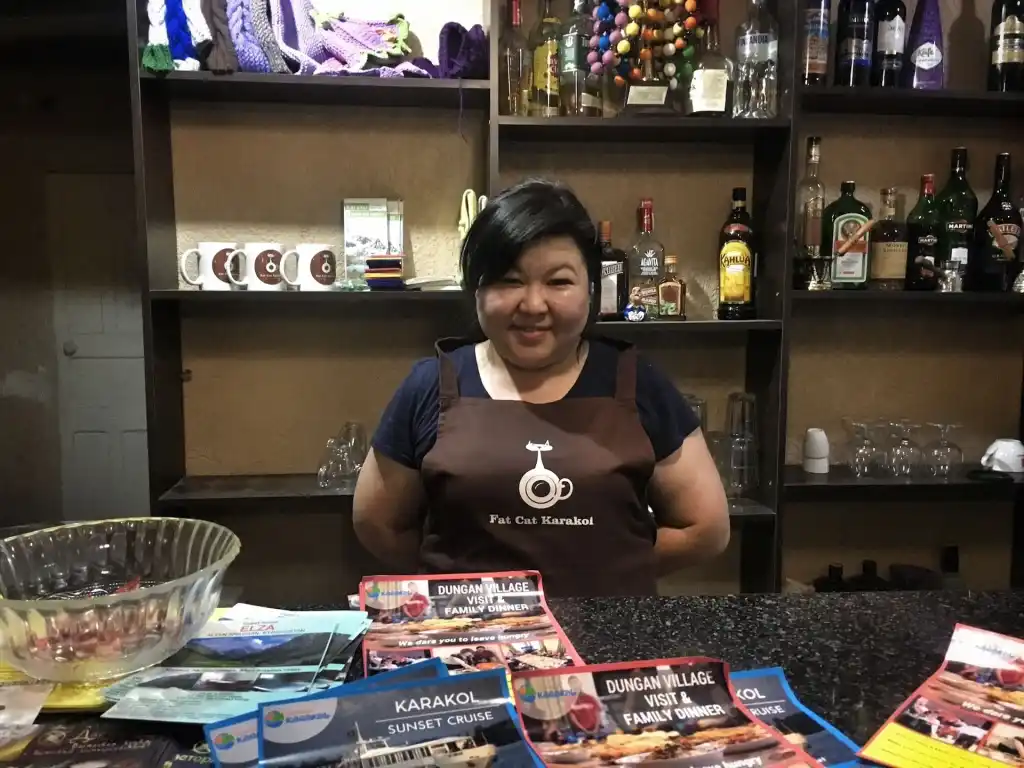
The other one I really like was just a few blocks away, Karakol Coffee. Both of them are nice spots to chill and both of them also serve alcohol including craft beer and pretty good bottles of wine which might blow someone’s mind out there if the assumption was made that all you can find in Kyrgyzstan is tea, local beer, and vodka.
The Russianness
As a half Russian gal, I was pretty excited to feel the spirit of half my ancestors in Karakol. The town became a Russian military outpost back in the late 19th century and as well a favorite Central Asian stop off of the famous Russian explorer and geographer, Nikolay Przhevalsky.
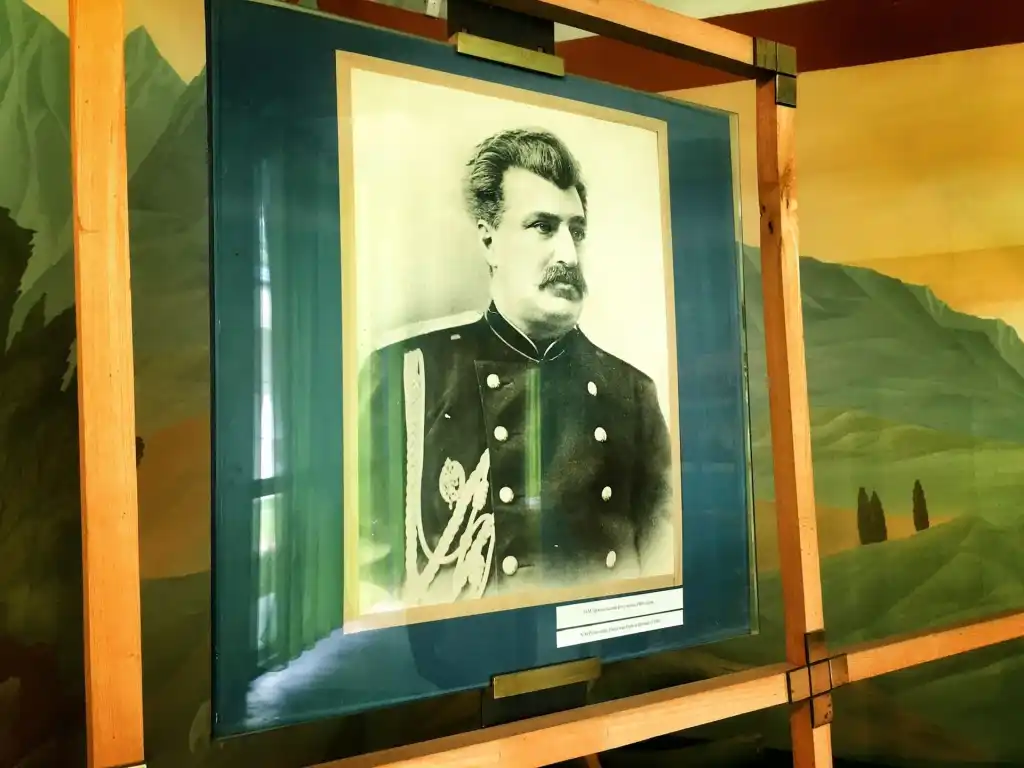
Karakol was actually called “Przhevalsk” off and on for a good 85 years during the 19th and 20th centuries in honor of Przhevalsky who died there in 1888 of typhoid. When Communism finally collapsed, the name “Karakol” finally came to stay. There is an interesting museum dedicated to him a little bit outside of town acknowledging the mark he made on the world which was enlightening it with all kinds of information about Central/Eastern Asia. He’s also buried not far from the museum because obviously Issyk Kul blew his mind, too.
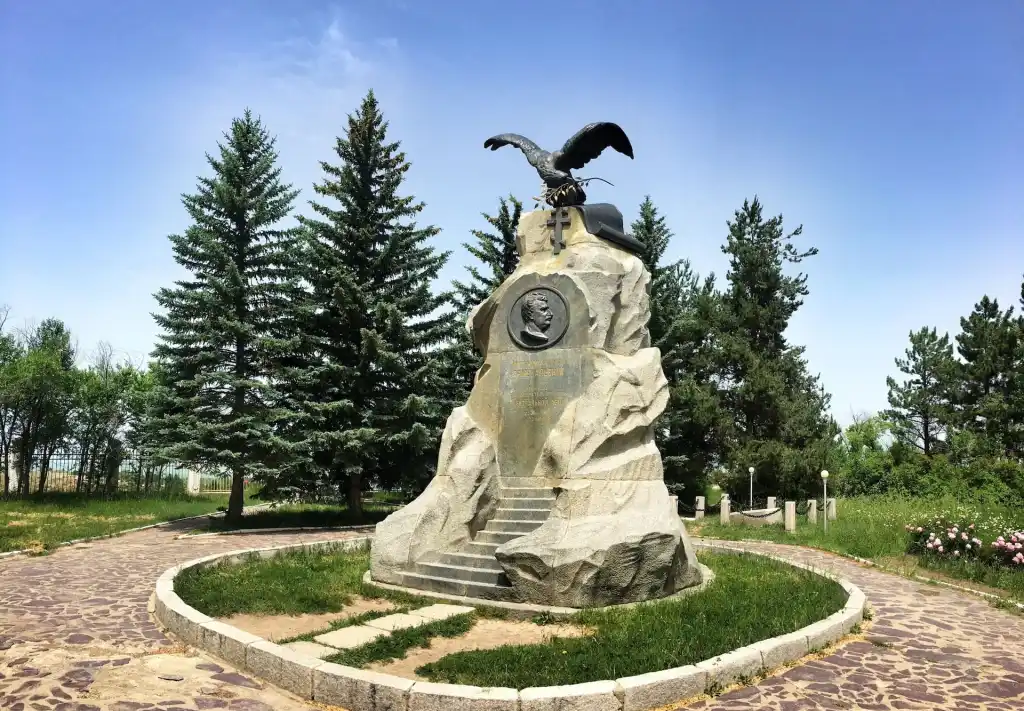
Around Karakol you can also find some really cute Russian-style homes but to be honest a lot of them are not in great shape and in need of restoration. One structure that is not, however, is the mind-blowing Holy Trinity Cathedral. I’ve seen a lot of Orthodox/Russian churches in my years and I think I can honestly say this is one of the most unique I’ve come across and I might have even traveled all the way to Karakol just to visit it alone #realtalk.
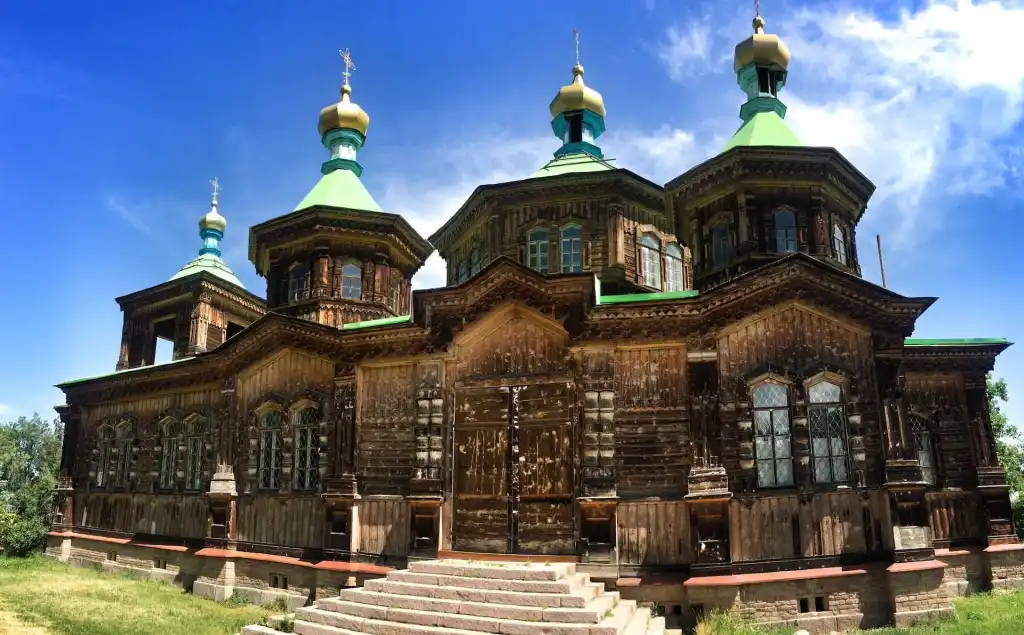
Bringing it back to Communist Russia, you’ll definitely get your fix of Soviet feels just walking around town which is full of concrete buildings, retro automobiles, and statues of historical figures. Like Lenin.

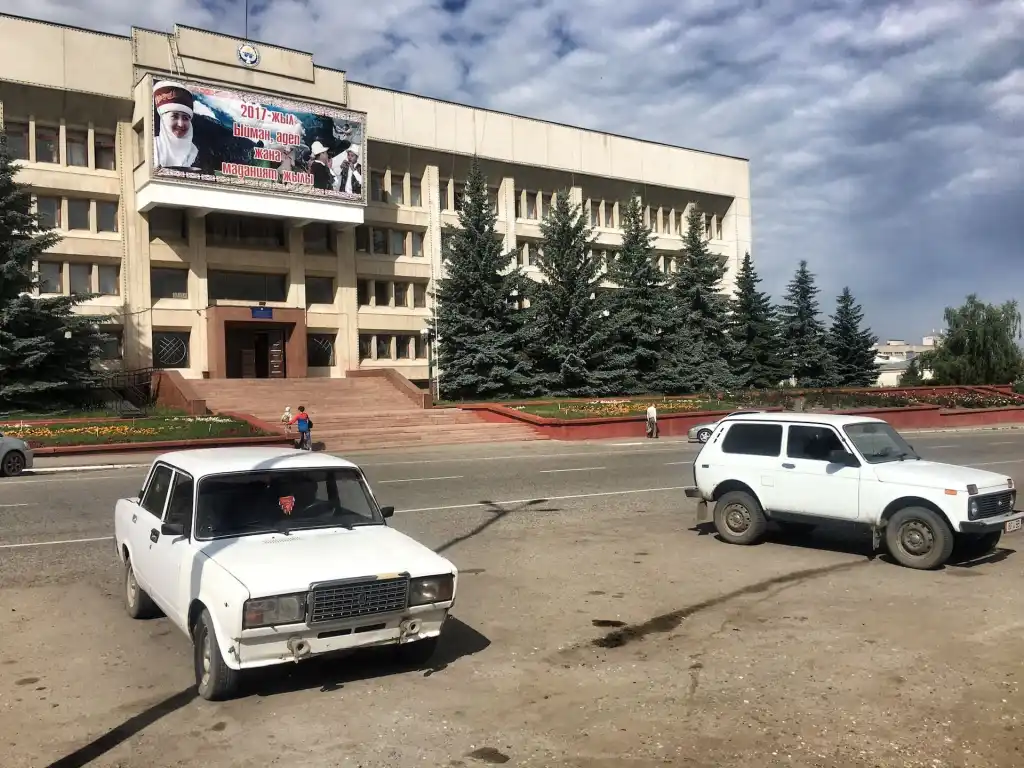

Round it all off with a trip to the Karkyra banya which probably looks and smells the same as it did in 1981 or to the famous Antique Shop where Zhamansarieva and Toktogula Streets meet to pick up a vintage postcard from Leningrad or golden bust of Stalin, and you can definitely tell your friends back home you also spent some time in what’s left of the Soviet Union whilst in Karakol.
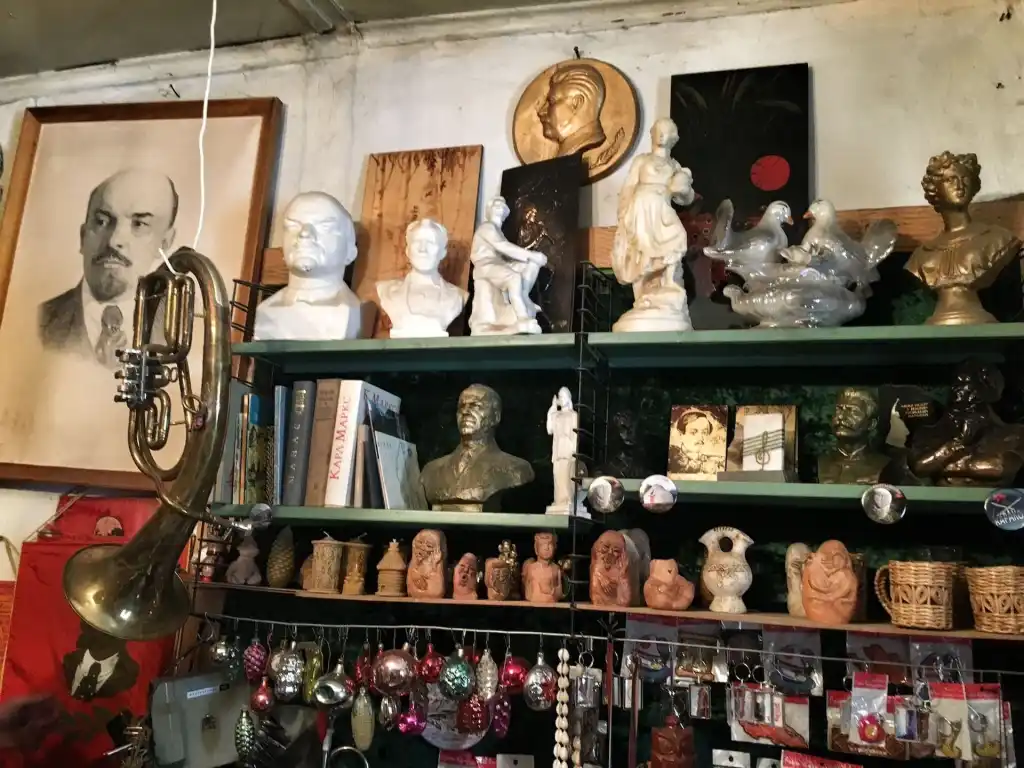
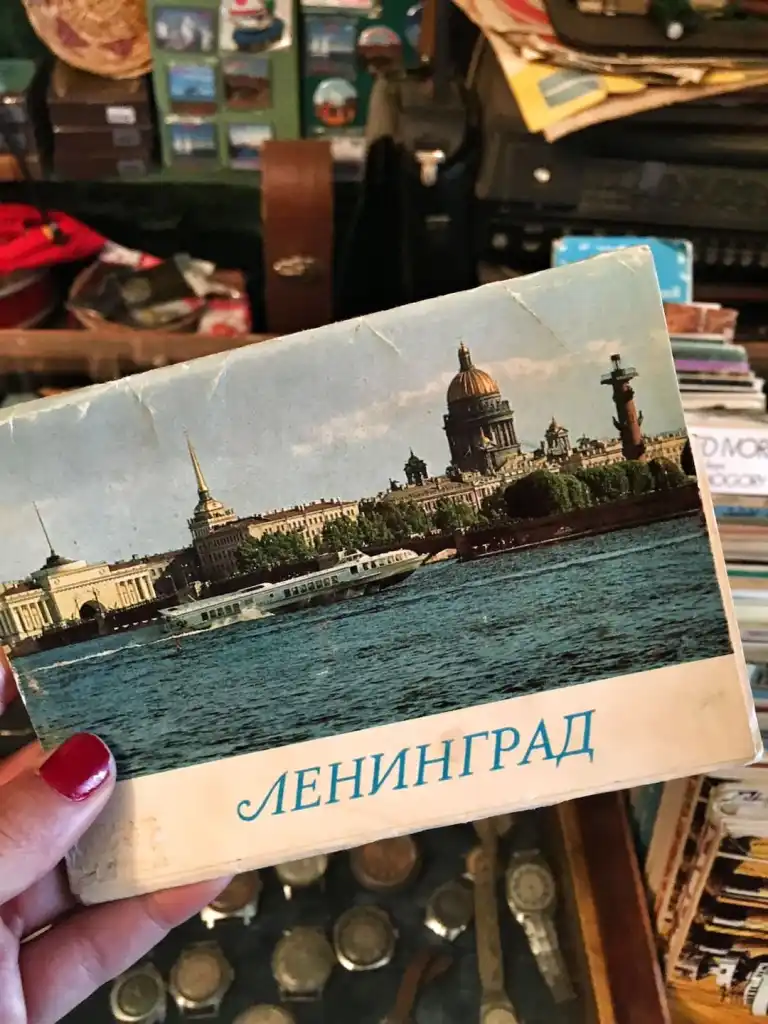
China vibes
Another thing that totally intrigued me, blew my mind, was the Chinese influence found around here – and in ways that I never imagined.
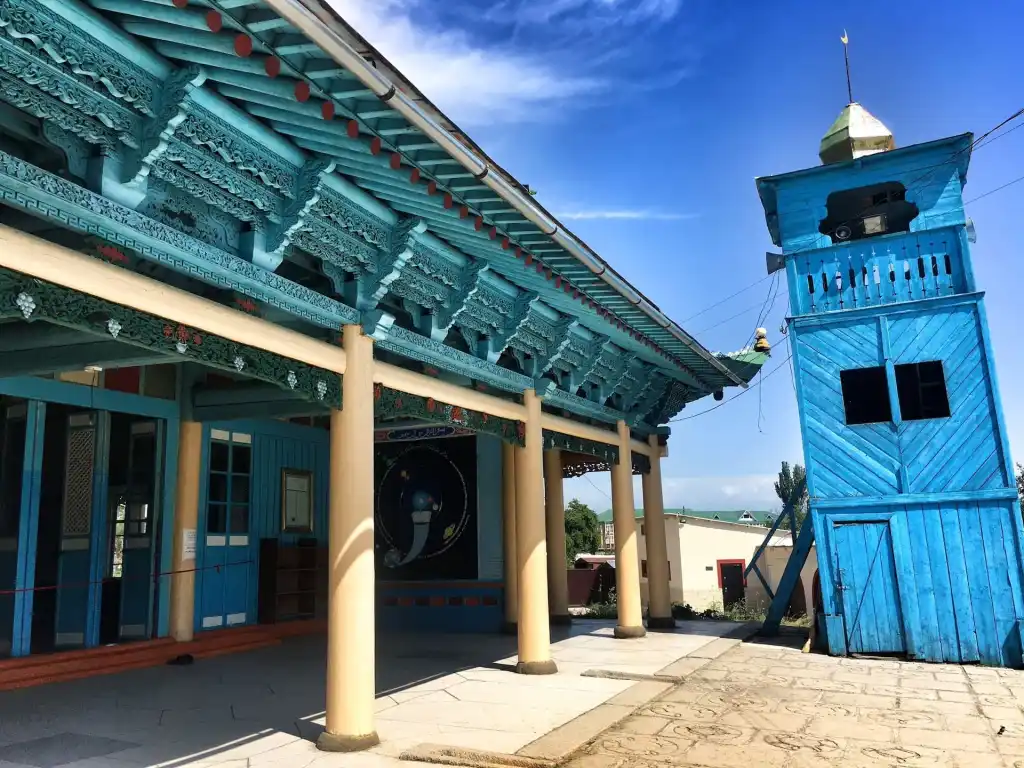
The major mark is in the cuisine (see below), but can I just take a moment to acknowledge one of the most unique Islamic places of worship I’ve ever encountered? This funky Dungan Mosque in Karakol was designed by Chinese architects in the beginning of the 20th century and though it is made of wood, it was built without using any nails which is mind blowing. Almost as mind blowing as the fact that it is a mosque and not a temple. Same as the one below in Yrdyk. Architecturally it’s a beautiful marriage if you ask me and just another example of something I never expected to find on this part of the planet.

In case you’re wondering how this style arrived in Issyk Kul, well it’s a complex history of the Dungan and Uighur migration to Kyrgyzstan that I’m still trying to understand, but basically you should know both groups are Muslim and both were forced to leave or they fled from where they were originally from in China for some reason or another, especially towards the end of the 19th century. That’s about all they have in common though. Their appearance, food, and traditions are totally different – but yes, it’s thanks to these two ethnic groups you can feel some imported China vibes while hanging around Issyk Kul/Karakol.
Unique culinary experiences
In general, the food in Kyrgyzstan completely blew my mind. After I took a bite of my first laghman in Bishkek, I was already prowling the web to see where I could find a restaurant that serves it from Los Angeles to Prishtina. Karakol is unique in that a few culinary experiences have been developed for you to not only sample all the best bits of its incredibly varied cuisine, but also get involved. Two of the best things you can do are a Dungan family dinner and a laghman cooking experience/lunch.
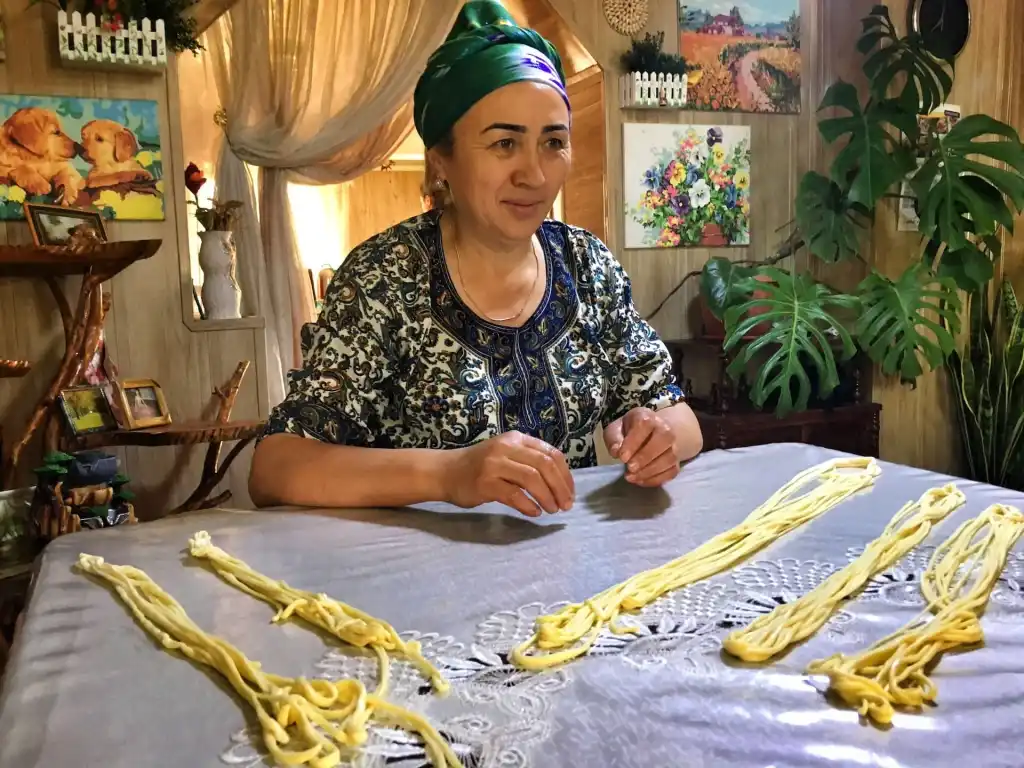
Essentially a noodle dish that can be fried or served like a soup (my fave), laghman arrived in Kyrgyzstan with the Uighurs from western China in the 19th century. You can give pulling your own noodles a go at the home of lovely Gulya before she cooks them up and serves them to you in her dining room.
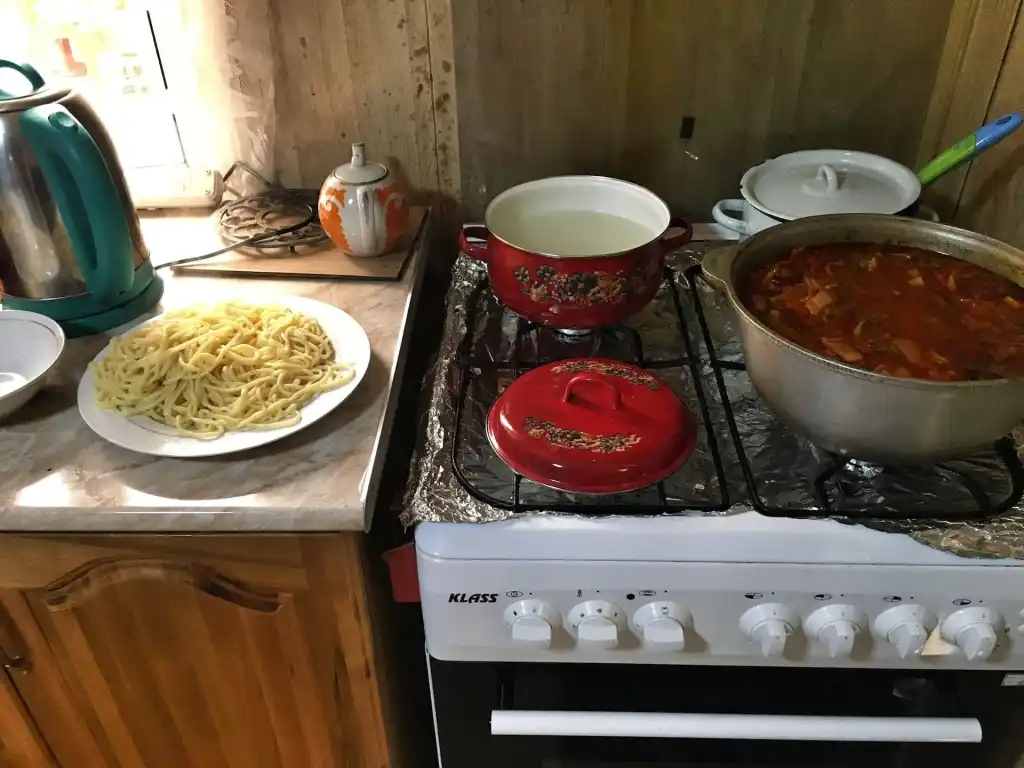
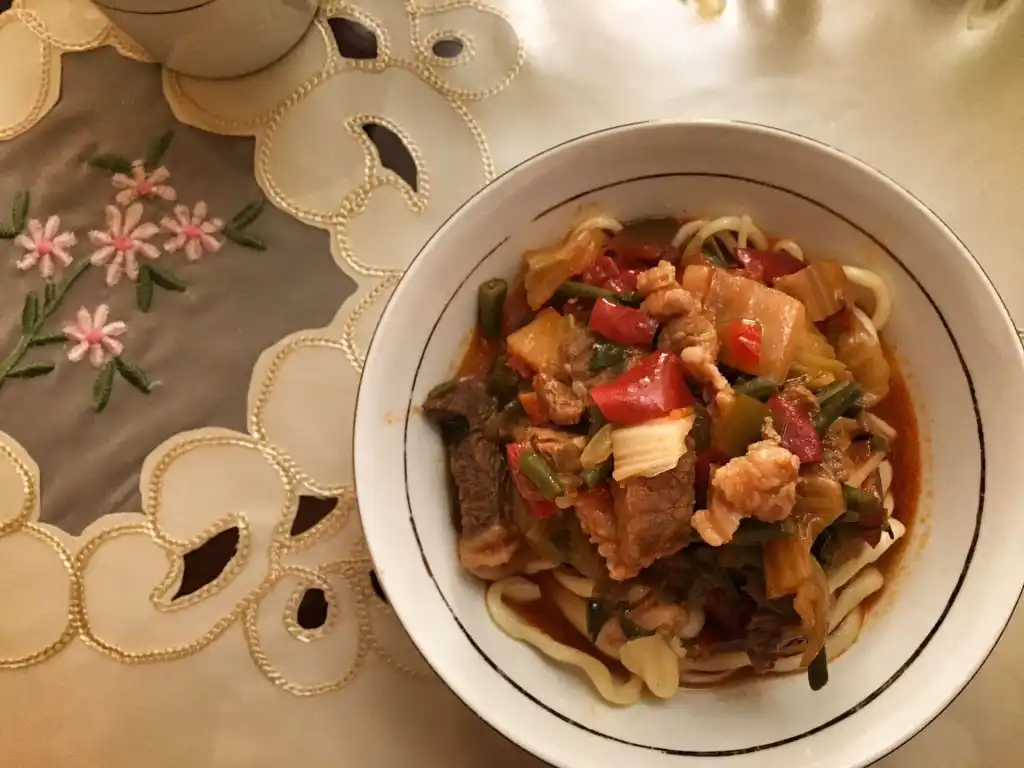
The Dungan family dinner is a bit more of a cultural experience and WAY more of a feast out in the village of Yrdyk about 10 kilometers outside of Karakol. You start with a visit to another Dungan mosque (photo above) and to the local museum which houses a bunch of random items that didn’t all make sense to me, but it’s a good place to learn about the history of the Dungan community there which is one of the largest in Kyrgyzstan. Then you’re off to a local family’s home where they sit you on the ground and teach you the Dungan meaning of hospitality which at the dinner table means 8-12 courses of their specialty dishes from ashlan-fu to dumplings.
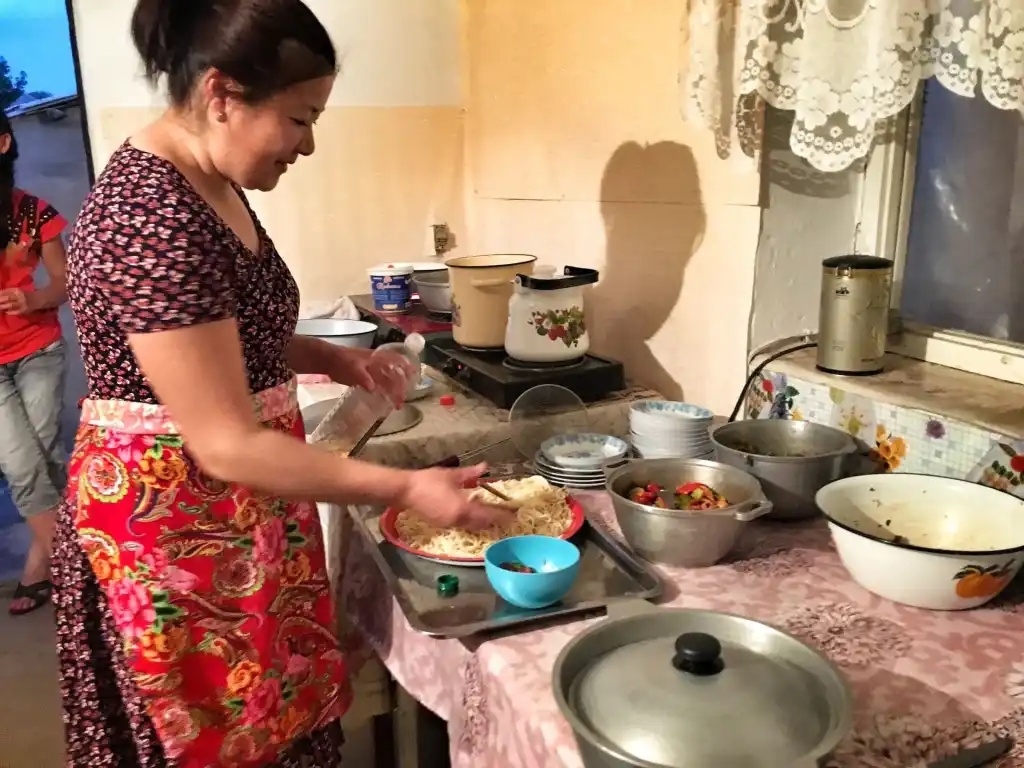
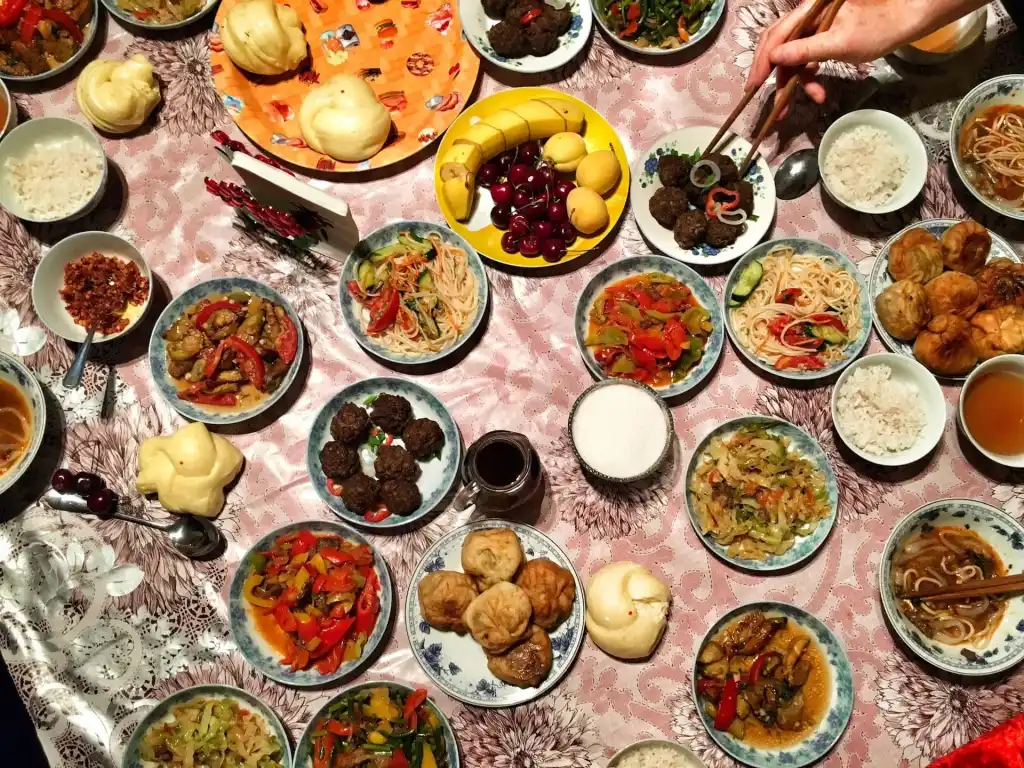
Speaking of ashlan-fu, Karakol is somewhat a hotspot for the cold, spicy noodle soup and one of the best bowls you can find is at the bazaar near the bus station. There is an entire row dedicated to the dish so just pick whichever bowl of noodles or smiling lady speaks to you and go for it.
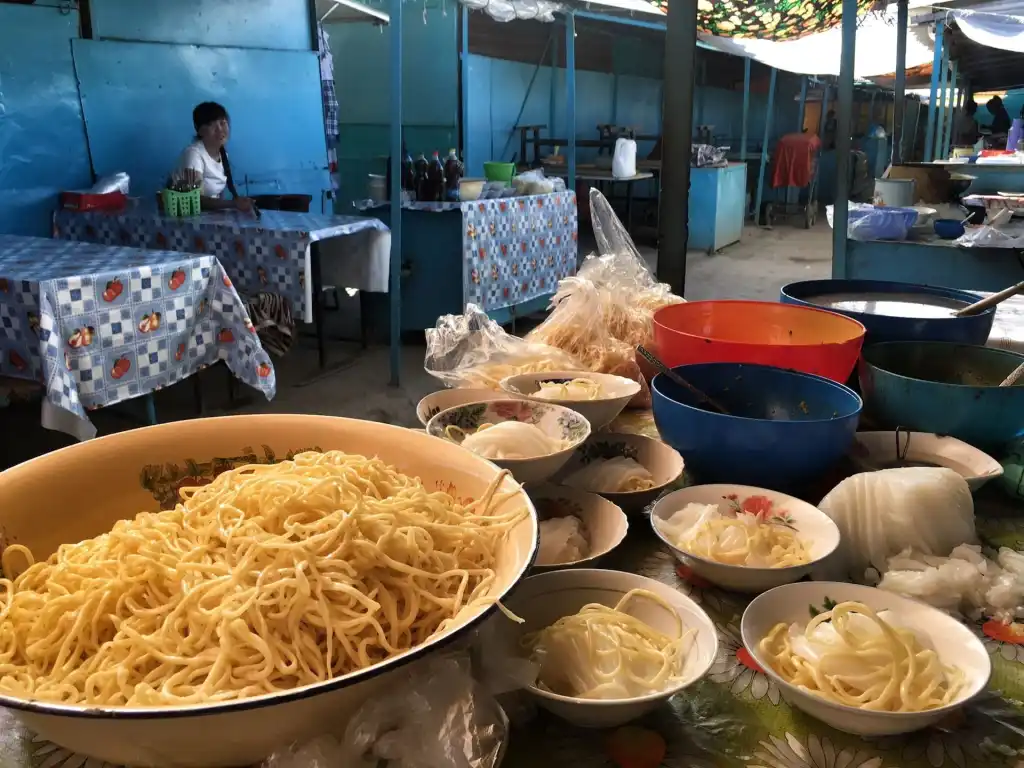

One last specialty that I had to put in my belly just to say “been there, ate that” is Issyk Kul beshbarmak at Dastorkon Ethno Restaurant which is “homemade noodles with horsemeat, national sausage ‘kazy’, and large chopped horsemeat pieces in rich soup”. They sure don’t horse around with that horsemeat and I have to say once I let go of my inhibitions and fond memories of the horse trek I had just done in Jyrgalan, I quite enjoyed it.
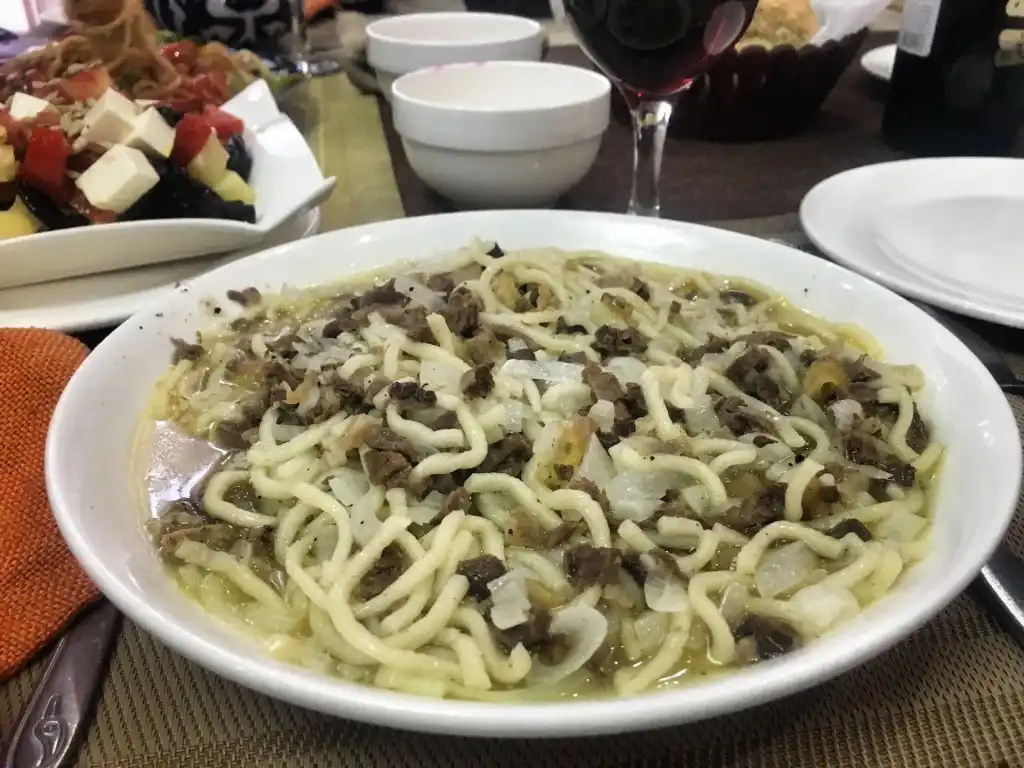
Sleeping in a yurt at Kerege Tash
As a gypsy, I can relate to Kyrgyz nomads who don’t have a permanent address and so one thing I definitely didn’t want to miss out on while I was in Kyrgyzstan was experiencing a night’s sleep in their version of a mobile home.
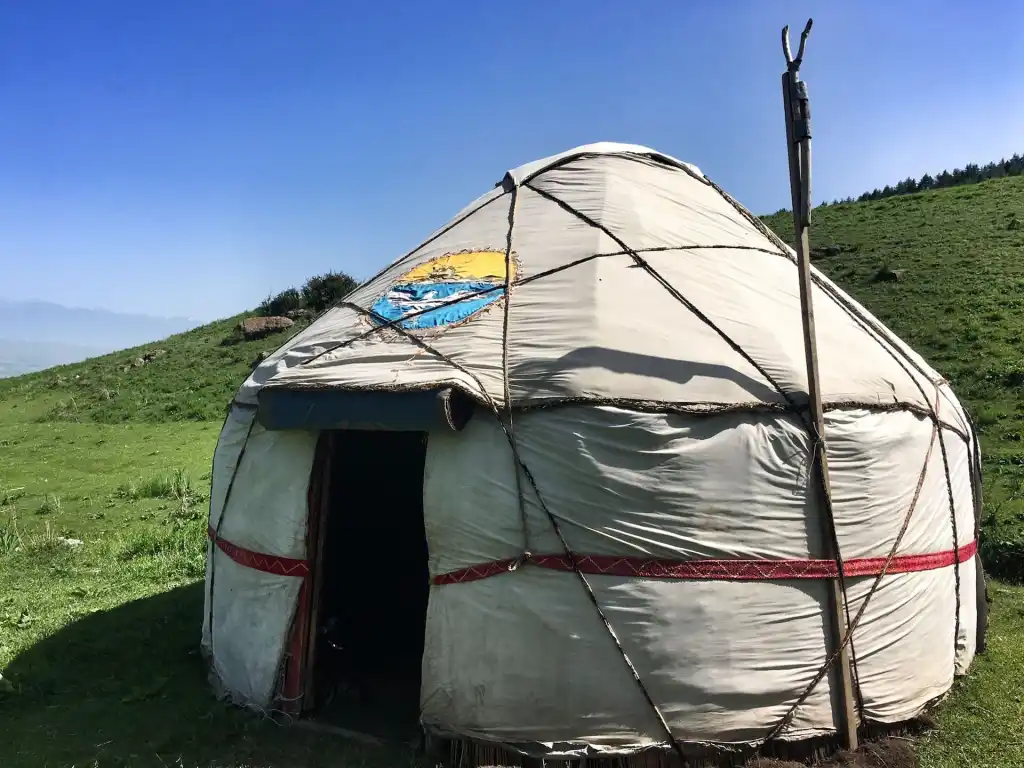
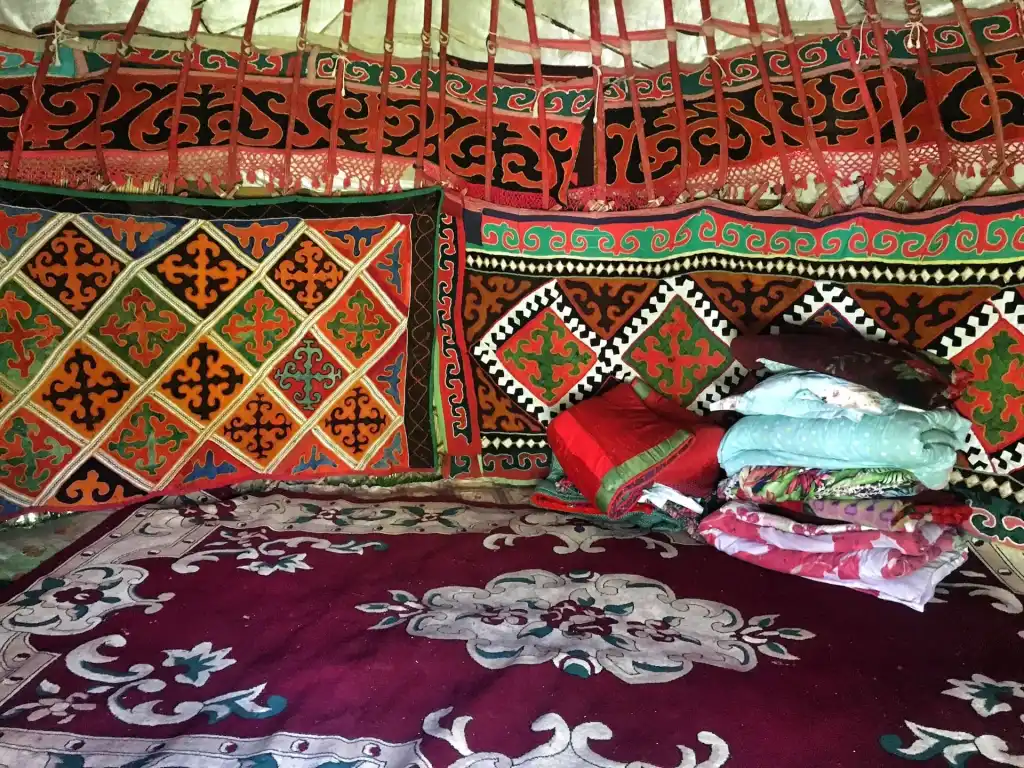
I was taken about 20 minutes outside of Karakol by Kudrat and my lovely guide Aiperi to the village of Kerege Tash where we met with a local family who fed us and took us up to a jailoo (summer pasture) to the yurt that we would call home for the next 12 hours. Admittedly it would have been more interesting if we were staying with a real nomad family so I could learn more about their way of life, but it was still pretty awesome chilling in the middle of nowhere and one of the most mind blowing sleeps I’ve ever had in my life. Something about that fresh air, complete silence, and I guess that bottle of vodka I brought along.
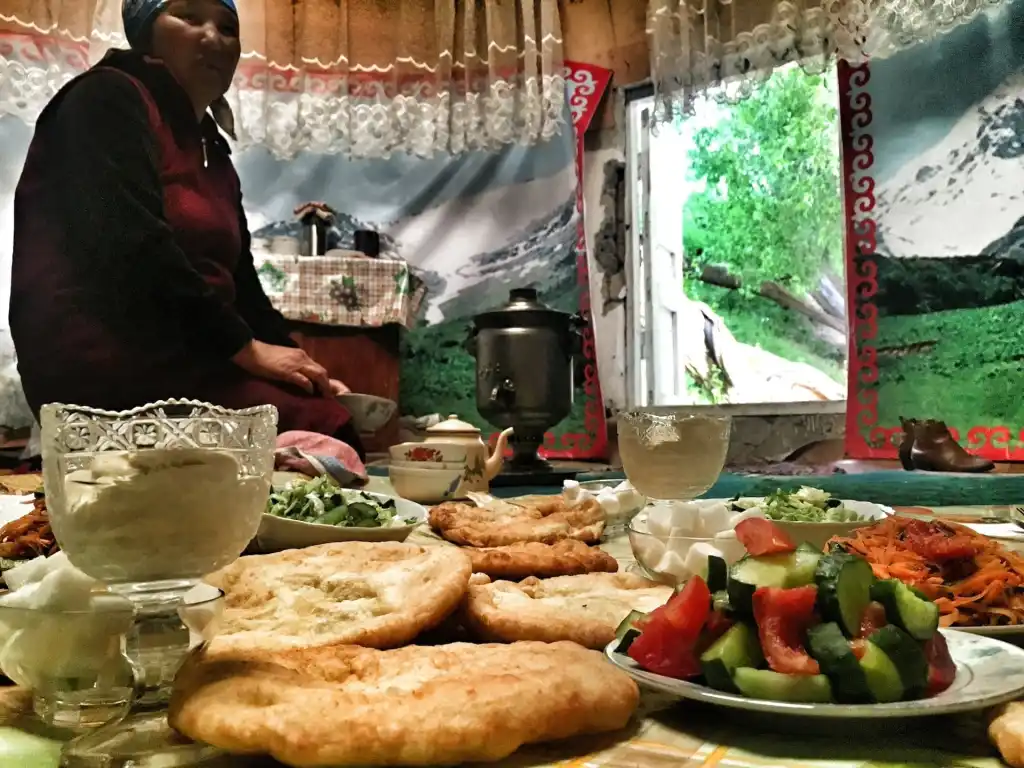
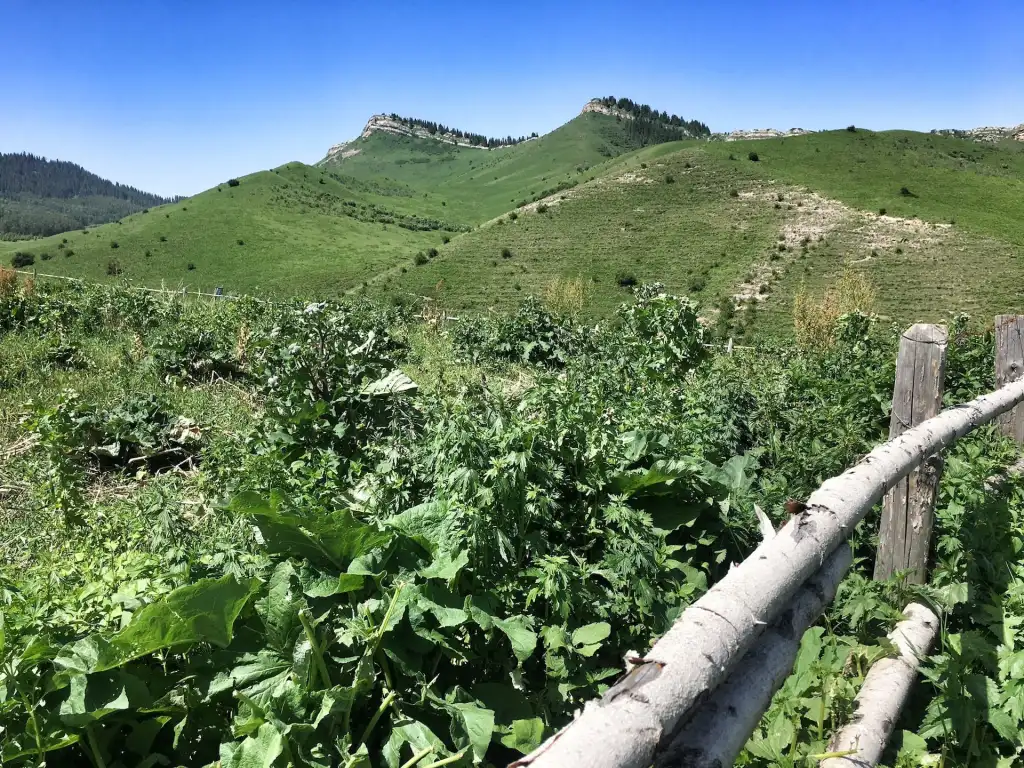
Climbing on top of Skazka Canyon
If you like fairy tales and incredible rocky landscapes, then Skazka Canyon (or Fairytale Canyon) about an hour and a half south along Issyk Kul from Karakol will blow your mind.
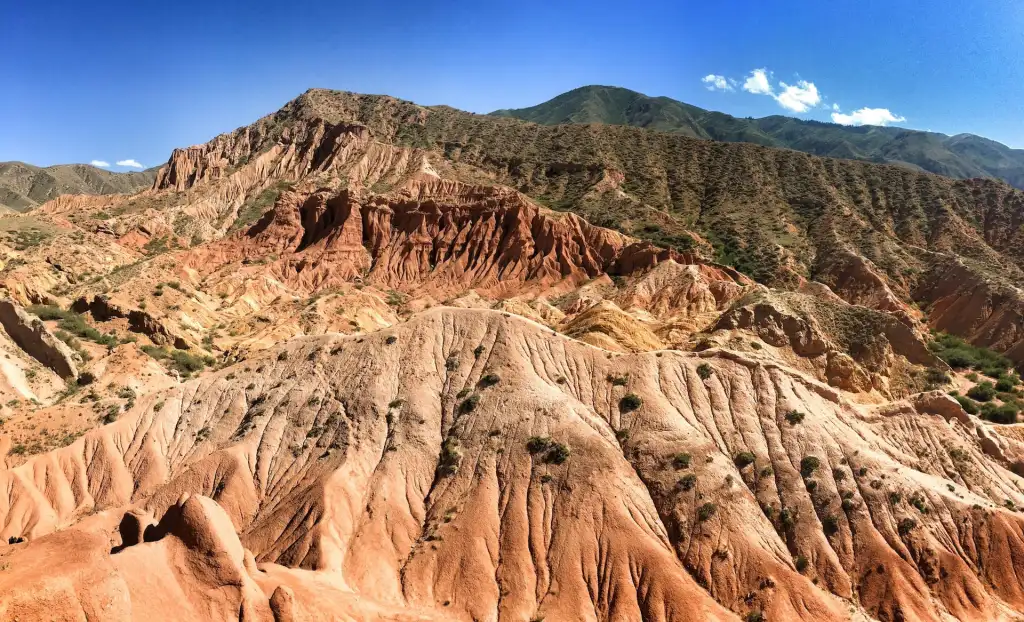
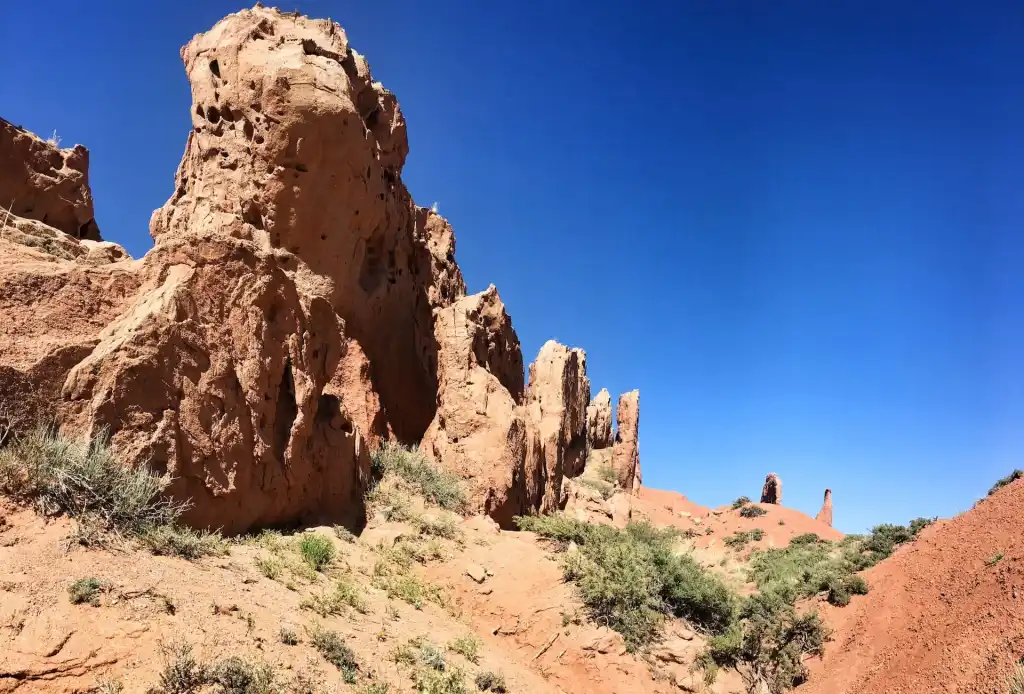

Growing up less than five hours away from the Grand Canyon, I always feel embarrassed not having visited a place that people travel across the world to see – yet I’ve been to the northernmost town in Finland and had no qualms living in a country that not everyone considers a country for nearly two and a half years. Where is the logic in that? For that reason, I really enjoyed visiting Skazka Canyon because I felt like I got to experience a mini version of what I’ve been missing out on in the western United States along with something else which the Grand Canyon doesn’t have – and that’s a lake view.
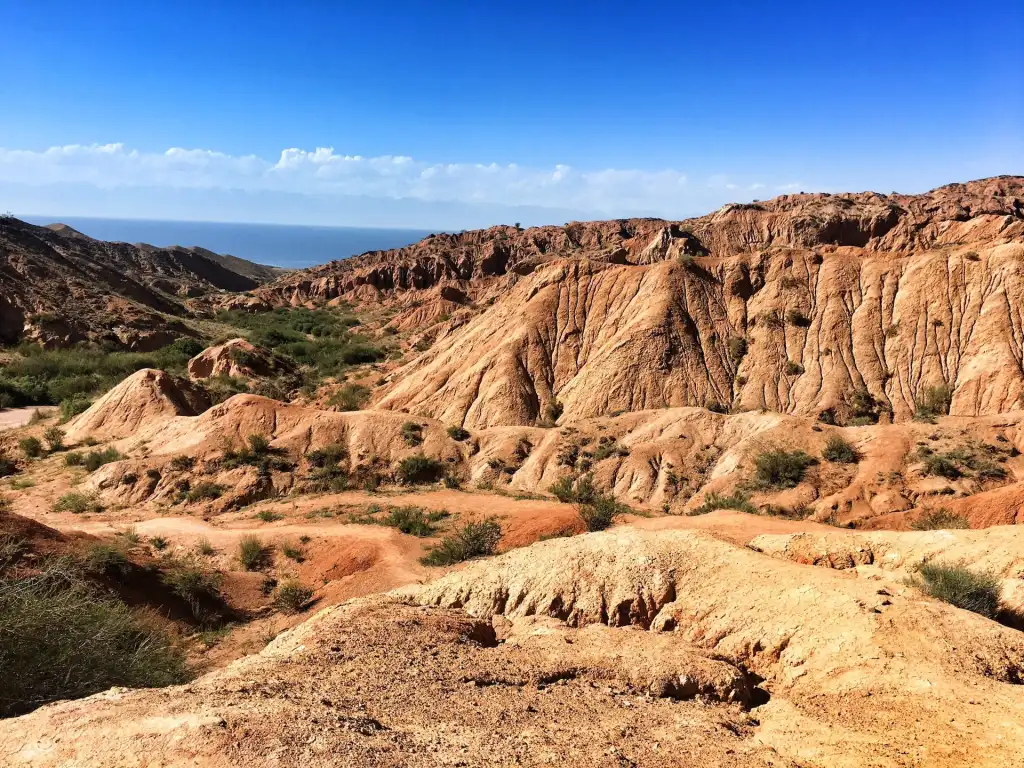
What else it has that the Grand Canyon doesn’t is no safety infrastructure, no marked signage, and no park rangers telling what to do and what not to do, but that’s why I think I liked it more. If you decide to visit, make sure to do the opposite of what I did and wear appropriate gear/footwear otherwise you’ll be slipping and sliding – possibly even seriously hurting yourself.
Exploring around Jeti Oguz
There are a lot of nice pictures and words floating around out there about Jeti Oguz, the “Seven Bulls” and as well its backside, the “Broken Heart”, but to be honest in real life it didn’t really blow my mind as much as I had expected it to after all the amazing red rocks I had already seen.
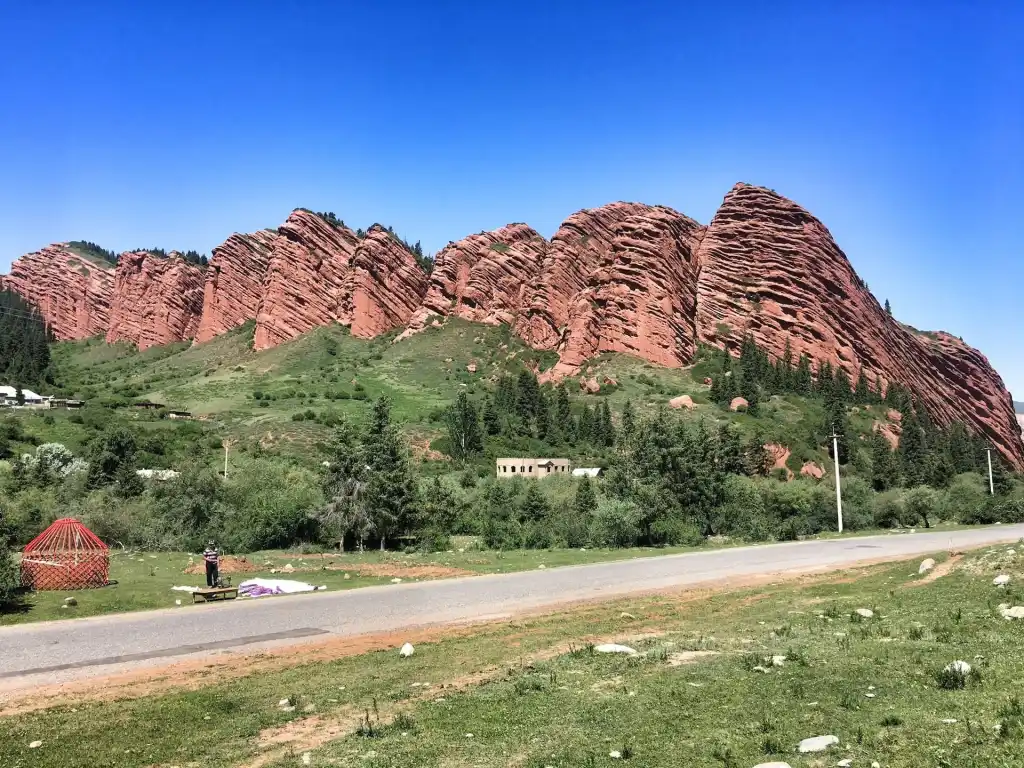
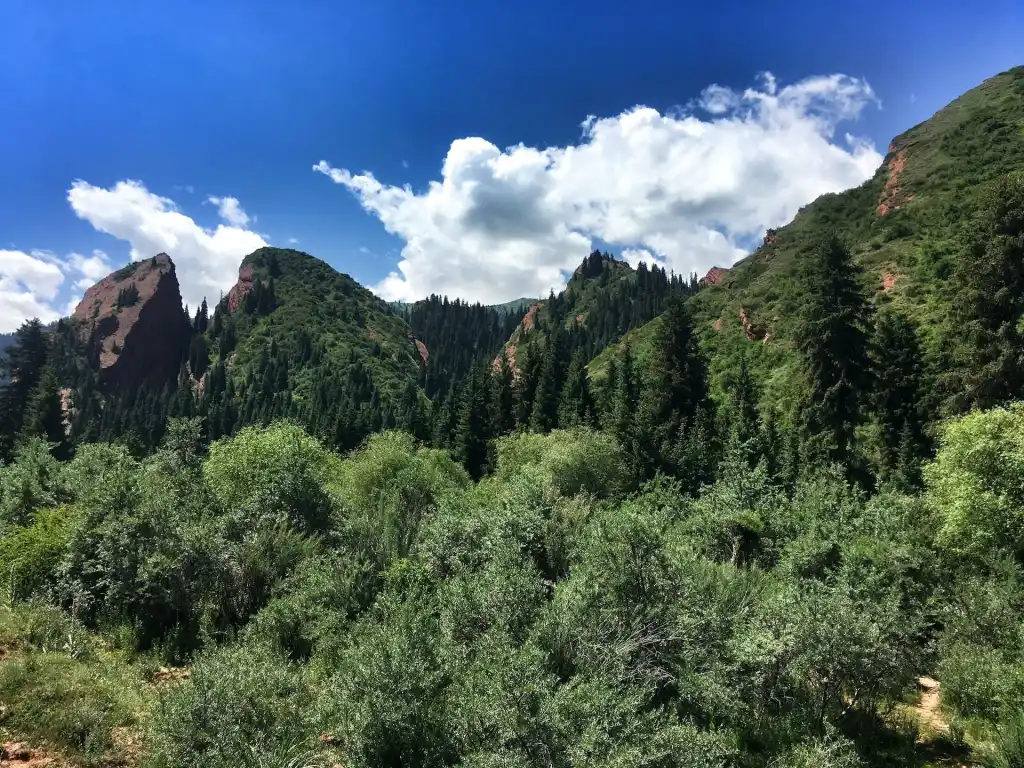
What did blow my mind however is a mere 8km away from it down a dusty bath towards the Jeti Oguz Gorge and that is the Valley of Flowers. It’s one of the most stunning settings I stepped foot on the entire time I was in Kyrgyzstan and got me wondering like “why didn’t I yurt it up here?”
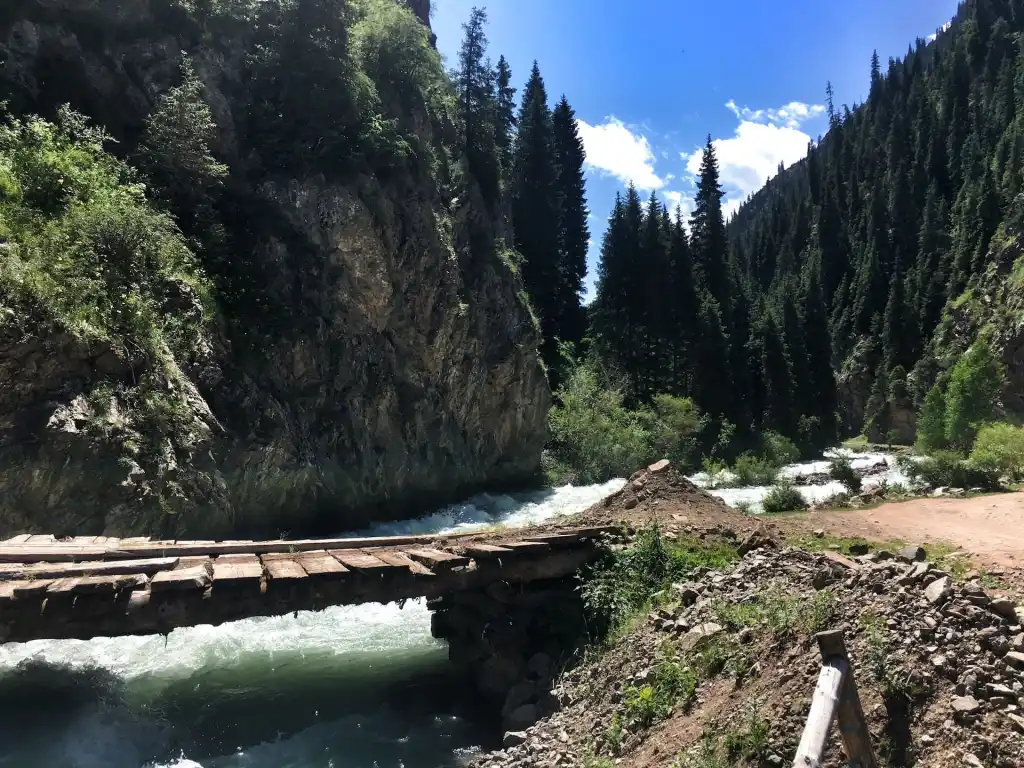
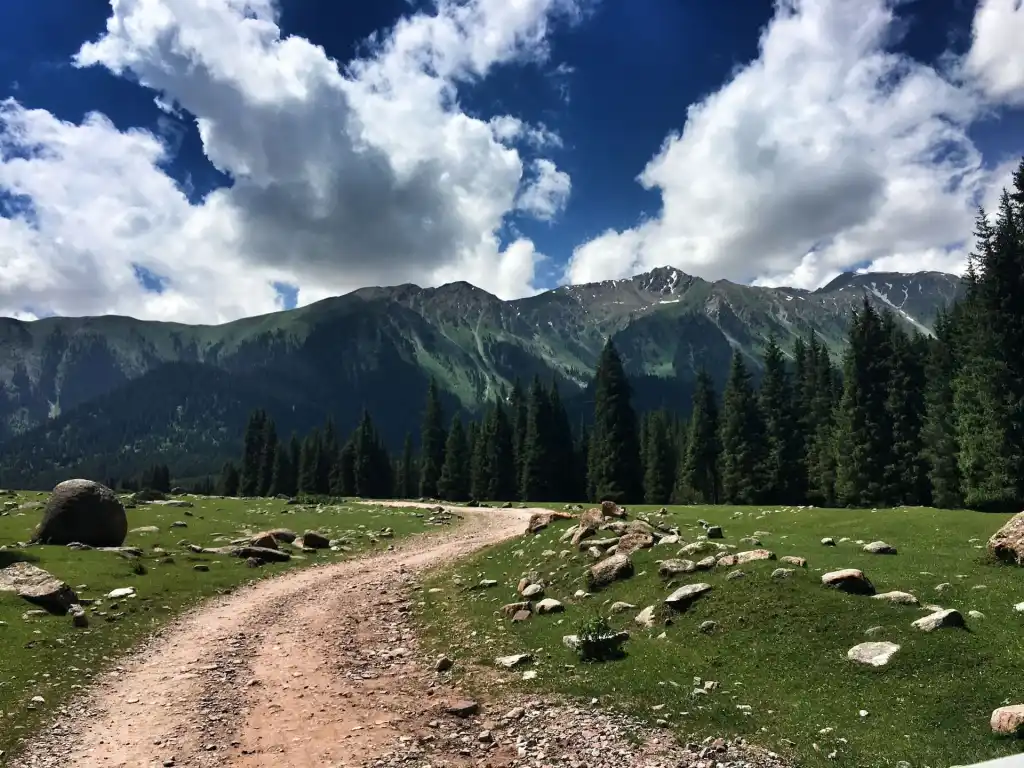
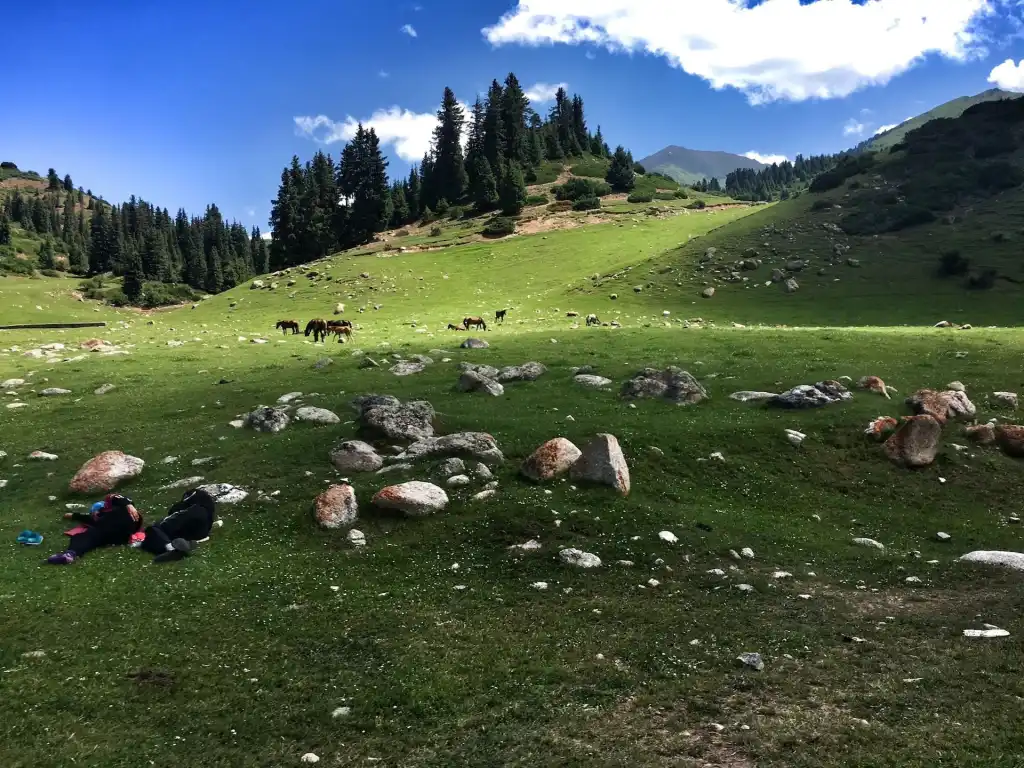
I also got my Kyrgyzstan eagle fix though sadly the poor guy didn’t look to be living in the best conditions spending his life mostly tied to a piece of wood. I was going to try and get him on my arm but in the end I got really scared he would bite my face off so I made my homie/driver Kudrat get involved. Such a beautiful creature! Next time I’m coming with scissors so I can set him free.
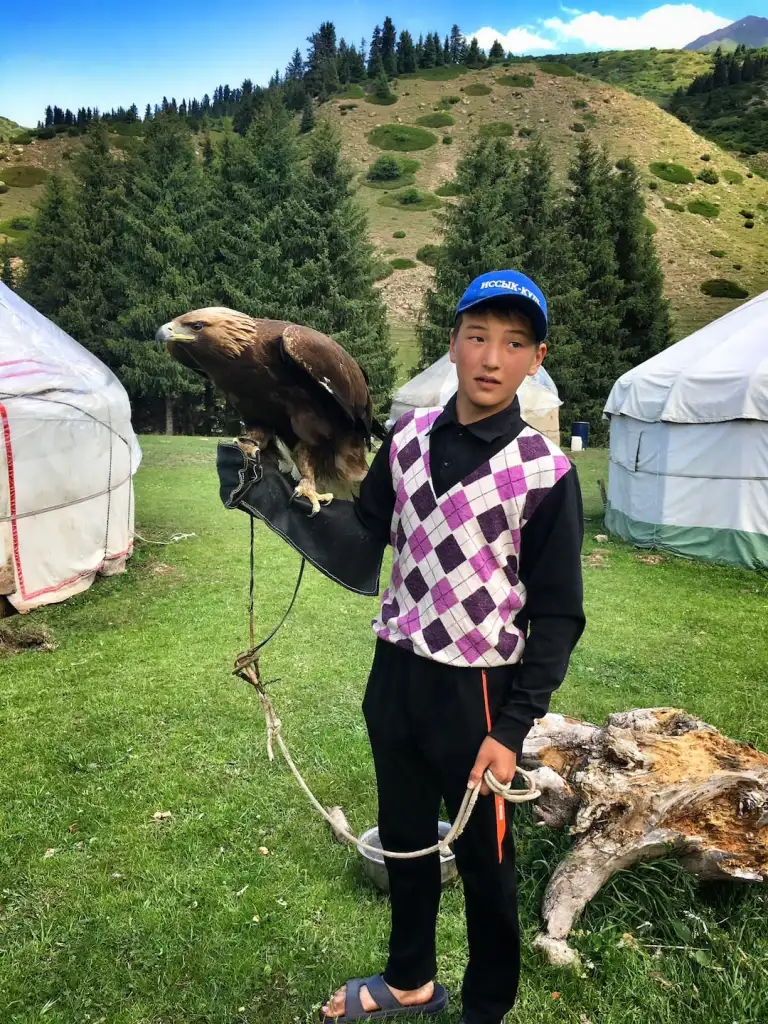
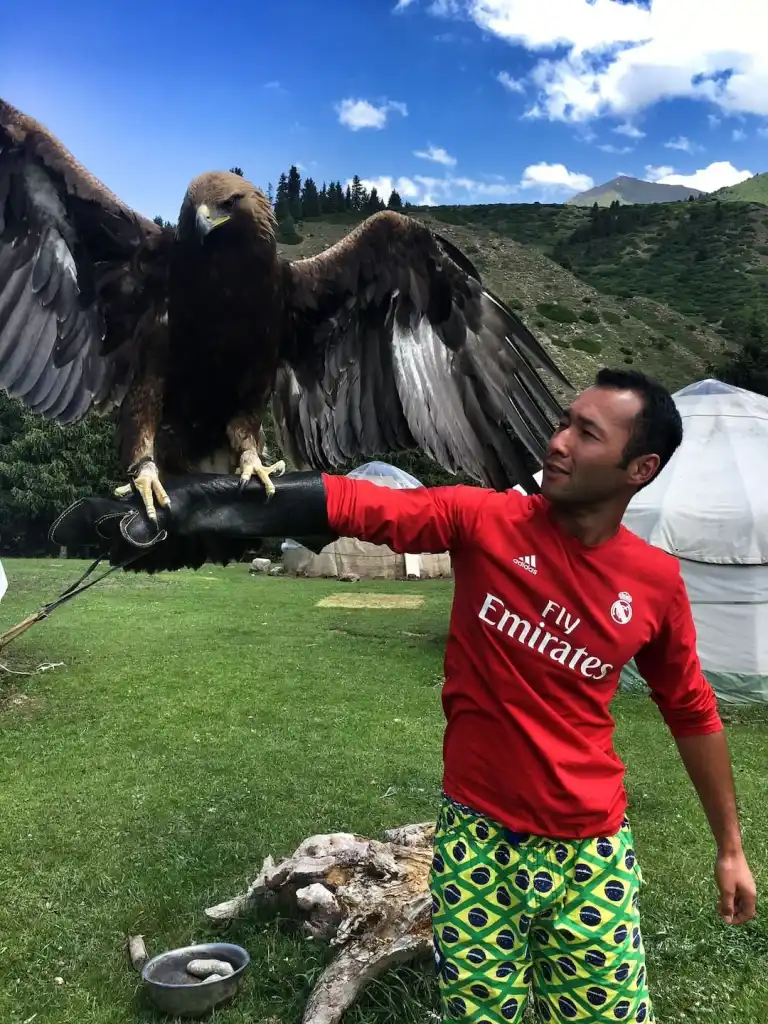
Getting down with Issyk Kul
And finally, last but not least, is becoming one with Issyk Kul. Having come down from 2,477 meters above sea level in Jyrgalan, the last thing I envisioned was slipping into a bathing suit and hanging out on the beach. But it happened.
It might be called “warm/hot lake”, but make no mistake – that water was bordering on icy in mid-June. Still it was an awesome experience swimming with snowy peaks in sight and Issyk Kul’s water is JUST.SO.CLEAR.
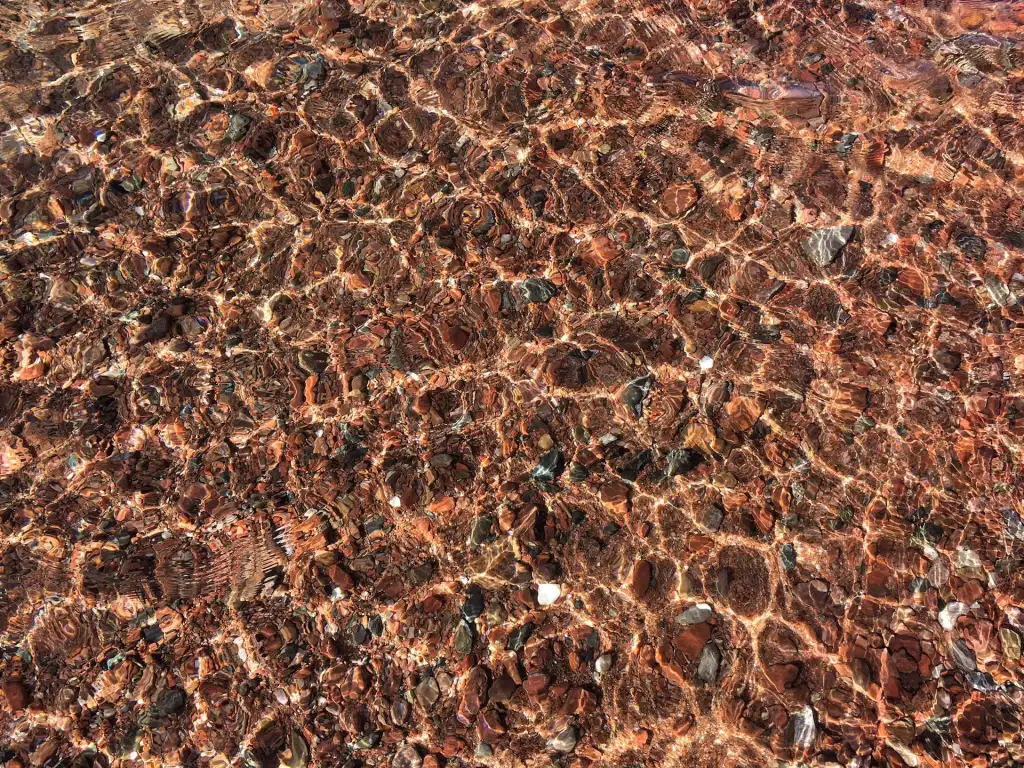
For those who forgot their bikinis or speedos at home, there is also the option for a sunset cruise near Karakol. The ride which lasts about an hour costs 1200 SOM so better to do with a bigger group and it includes a free drink (beer, soft drink, no wine) for each person.
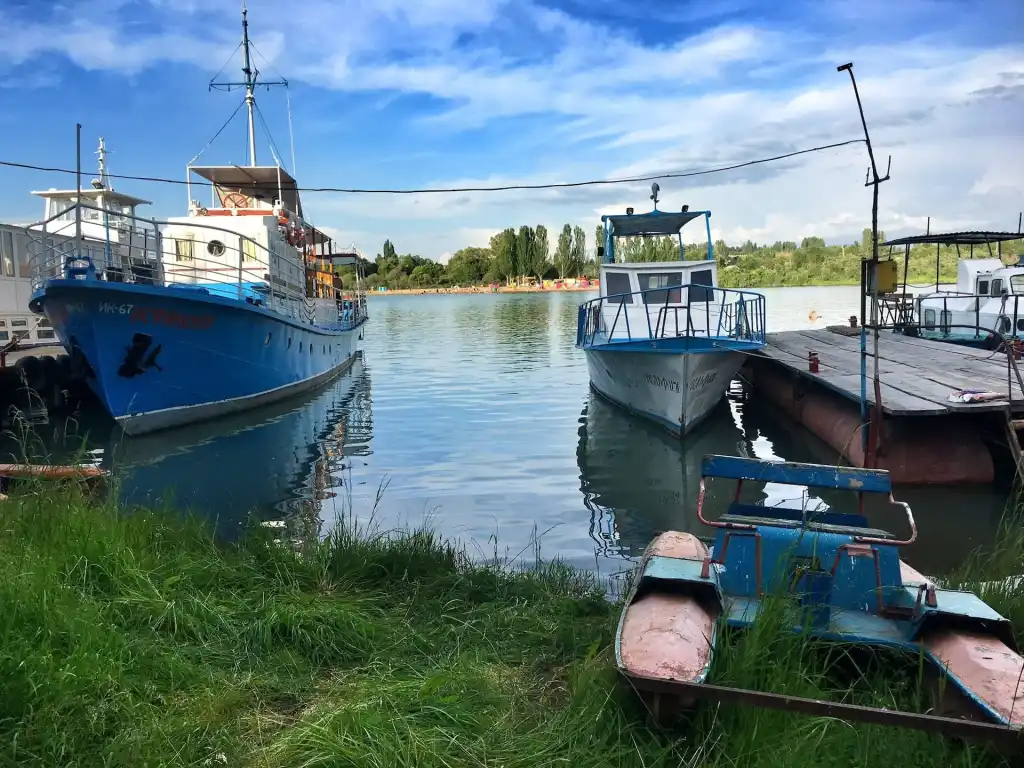
Karakol and Issyk Kul truly blew my mind. It’s one of the most interesting parts of the world I’ve been fortunate enough to visit and I have no doubt tourism in the region is going to grow exponentially. From climbing colorful canyons to stuffing myself with the most incredible cuisine, there were way more amazing things to do there than I imagined, more than I could even fit in, and I hope it won’t be long before I find myself in a heavy karaoke session in Karakol again.

